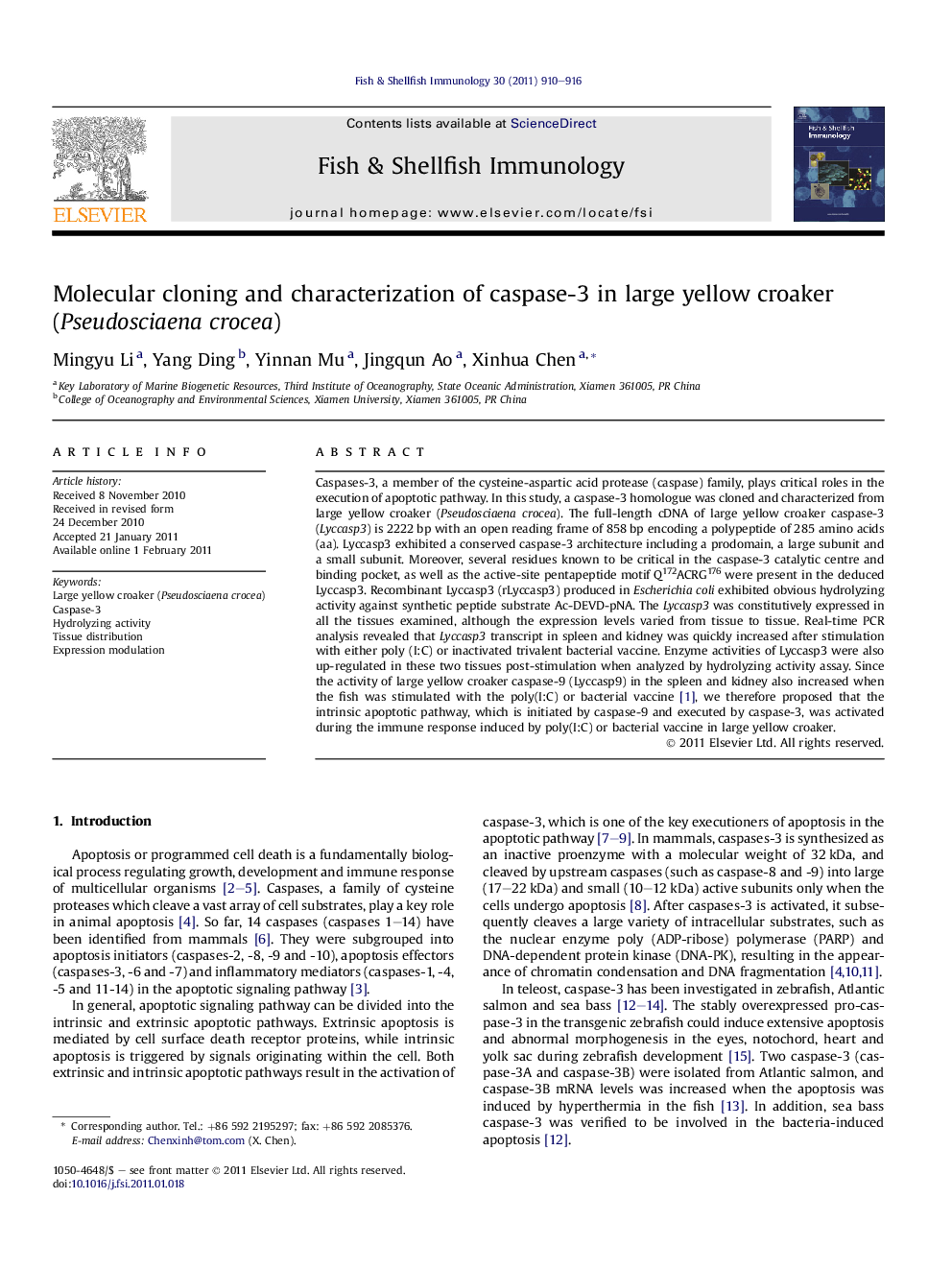| Article ID | Journal | Published Year | Pages | File Type |
|---|---|---|---|---|
| 2432627 | Fish & Shellfish Immunology | 2011 | 7 Pages |
Caspases-3, a member of the cysteine-aspartic acid protease (caspase) family, plays critical roles in the execution of apoptotic pathway. In this study, a caspase-3 homologue was cloned and characterized from large yellow croaker (Pseudosciaena crocea). The full-length cDNA of large yellow croaker caspase-3 (Lyccasp3) is 2222 bp with an open reading frame of 858 bp encoding a polypeptide of 285 amino acids (aa). Lyccasp3 exhibited a conserved caspase-3 architecture including a prodomain, a large subunit and a small subunit. Moreover, several residues known to be critical in the caspase-3 catalytic centre and binding pocket, as well as the active-site pentapeptide motif Q172ACRG176 were present in the deduced Lyccasp3. Recombinant Lyccasp3 (rLyccasp3) produced in Escherichia coli exhibited obvious hydrolyzing activity against synthetic peptide substrate Ac-DEVD-pNA. The Lyccasp3 was constitutively expressed in all the tissues examined, although the expression levels varied from tissue to tissue. Real-time PCR analysis revealed that Lyccasp3 transcript in spleen and kidney was quickly increased after stimulation with either poly (I:C) or inactivated trivalent bacterial vaccine. Enzyme activities of Lyccasp3 were also up-regulated in these two tissues post-stimulation when analyzed by hydrolyzing activity assay. Since the activity of large yellow croaker caspase-9 (Lyccasp9) in the spleen and kidney also increased when the fish was stimulated with the poly(I:C) or bacterial vaccine [1], we therefore proposed that the intrinsic apoptotic pathway, which is initiated by caspase-9 and executed by caspase-3, was activated during the immune response induced by poly(I:C) or bacterial vaccine in large yellow croaker.
